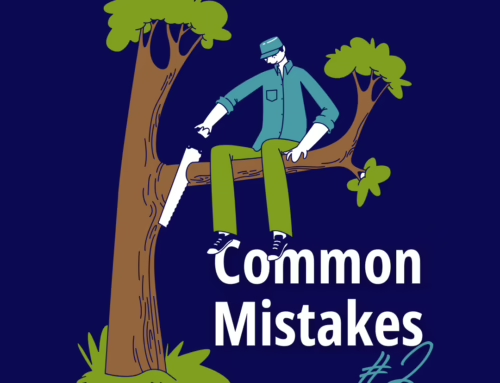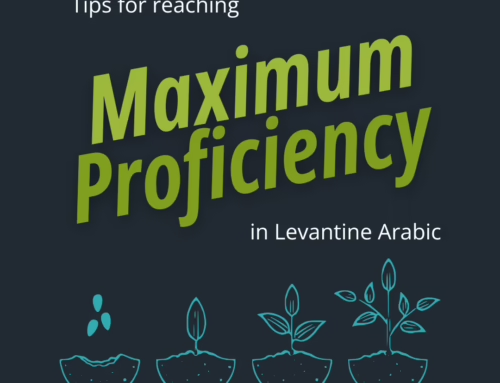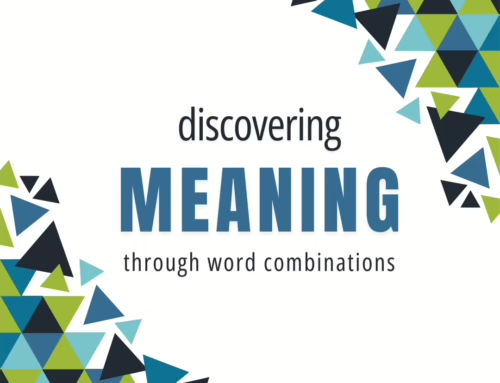Word combinations, not isolated words
I want to help you start to notice how lexical combinations impact the meaning of words. Dictionary definitions alone do not necessarily help learners know where and how to use vocabulary properly, and rarely does familiarity with a word’s definition or meaning in another language teach us how to utilize vocabulary in speech or when to choose that word over another that has a similar meaning. It’s only when we are exposed to the way fluent speakers use their language that we learn the appropriate place to put the language we know. We also need to know what other words are often found near vocabulary that is before or after that word.
Sinclair, a well-known British linguist, stressed the idea that vocabulary meaning is discovered in its word combinations. It is only by understanding how a word is actually used in the context of other language around it, do we fully comprehend its meaning. Aitchinson, a professor at Oxford, put it another way, saying that co-occurrence of words creates meaning and understanding.
Meaning is created by putting words together.
Understanding vocabulary beyond dictionary definitions
This is part of the reason I’ve never found learning by translation or thinking of what a vocabulary item means in a different language helpful. The meaning of words can actually change when combined with different vocabulary used in a different context. The way a word is used in one language may be radically different than the way it is used, or the intended meanings it has, in another language.
We will look at an example in Arabic below to demonstrate how verb-noun combinations impact meaning. This is just one way to show you the truth of meaning in usage, one I think is clear and will help illustrate the point that meaning is discovered as we reencounter vocabulary in new and different ways. Different contexts and different situations lead us to understand the whole meaning of words.
Understanding meaning happens over time
People often get into the bad habit of believing that a new word can be understood the very first time it’s encountered. This, as we’ve said before in previous podcasts, is simply not true. It takes time to let words reappear, in new ways and new combinations, in order to understand their application or restrictions. Dictionary definitions alone cannot help learners know where and how to place vocabulary in relationship to other lexical items. This is particularly the case when a word has more than one, meaning. The verb run as Dr. Walker at the University of Birmingham points out, displays this very effectively (2008, pp. 295–98). Run has multiple meanings when combined with various nouns. Run can be associated with physical exercise: we can run a marathon, run a 5K, run a lap. Or it can be used in reference to the management or operation of something: we can run an assembly line, run a factory, run a business. In this scenario, each meaning attaches to a unique set of collocates specific to that meaning. It is in observing the nouns that are partnered with run that the verb’s meaning can be fully realized.
Notice how meaning is discovered and determined only by the connections to the nouns that follow. This is why Weinert said, “we must abandon strict boundaries between language knowledge and use” (1997, p. 180). Only when we are familiar with the vocabulary found in frequent combinations with other words will we truly know how it is used and what meanings it can achieve. By noticing what nouns commonly arise with verbs, we can expand our understanding of the verb itself.
Meaning occurs when words are put together
In English, there are a whole group of verbs referred to as de-lexicalized verbs. They carry little meaning in and of themselves. However, when they link together with other words, a wide variety of meanings can be created. Take, for instance, the verb get: “get married,” “get in,” “get divorced,” “get paid,” “get older,” “get more difficult,” “get lost,” “get drunk.” Make and do are like this as well. Why do we “make pancakes” and “make friends”? Why do we “do homework” or “do our chores”, but we “make pizza” and we “make excuses”?
Jane Conzett, a writer and professor at Xavier University, asserts that it is a teacher’s duty to persuade learners that to know a word means to understand how it behaves alongside other vocabulary (2000, p. 83). Simply knowing a lot of vocabulary is insufficient for achieving fluency if collocational competence remains weak (Hill, 1999, p. 163). What this means is that we have to learn how to use vocabulary by also learning what words are often used alongside it. We “treat the patient,” and we “repair the damage.” We do not “repair the patient” or “treat the damage.” Why can you “reach a conclusion” or “reach a goal,” but you cannot “reach an aim”?
Navigating Arabic verb-noun dynamics: a closer look at “بقدم”
A lot of what I shared here could be applied to learning any language, but I want to bring it back to one very clear example in Arabic that illustrates this point effectively: the verb بقدم (biqadam). I believe this very well could be considered a de-lexicalized verb because, as you will see with these examples, we can properly understand the meaning of this verb only when we combine it with the nouns that follow. Notice how we could choose more than a dozen different verbs in English to express the meaning of this one verb, بقدم, in Arabic.
| Arabic Word Combination | English Translation |
|---|---|
| بقدم برنام | Host a show |
| بقدم لاولادي | Give to my children |
| بقدم خدمة | Provide service |
| بقدم فكرة | Put forward/propose an idea |
| بقدم مساعدة | Offer help |
| بقدم عرض | Making a presentation (at school) or having a sale |
| بقدم امتحان | Take a test |
| بقدم طلب توظيف | Apply for a job |
| بقدم اجازة | Submit a request for time off |
| بقدم القهوة | Serve coffee |
| بقدم الساعة | Move the clock/hour ahead (such as for daylight savings) |
| بقدم شكوى | File a complaint |
| بقدم موعد | Move up an appointment |
The meanings are made clear only when we know what noun follows. Its meaning is completely dependent on which noun follows the verb, بقدم. In English, we might use, “host,” “give to,” “provide,” “put forward,” “propose,” “offer,” “make,” “take,” “apply,” “submit,” “serve,” “move,” “file,” “move up.” All of these are communicated with the verb بقدم. But we don’t know which until we add the noun after the verb. This is not the only verb that does this; there are others as well. Many verbs have multiple meanings, and the meaning comes when we introduce the noun that follows that verb.
Strengthen your powers of observation
Remember that not all languages have expressions that are equivalent. This is important to understand so that we don’t have transference issues, which occur when we assume things are the same in our own language and then we transfer those assumptions onto our second language.
These kinds of patterns are incredible to discover. That’s what learning Levantine Arabic is about. Language learning is a process of discovering a culture alongside a language.
Remember that all good language learners are good observers. Start to observe what nouns commonly come after the verbs that we introduce in Levantine Arabic. If you keep noticing these things, pretty soon you’ll discover that you will start to use them with accuracy.





